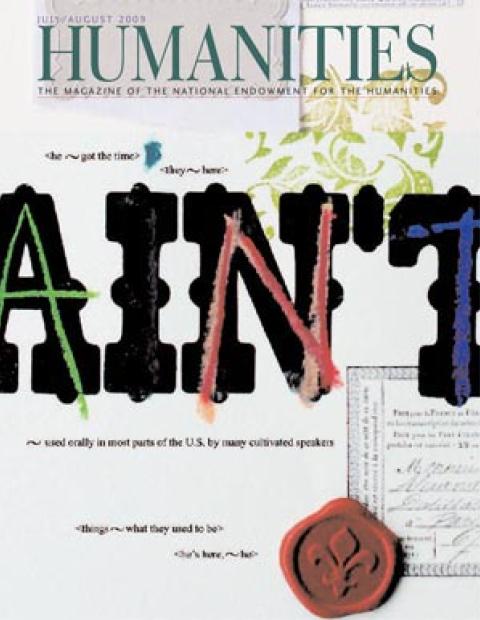From The North American Journals of Prince Maximilian of Wied, Volume I, May 1832–April 1833, published by the University of Oklahoma Press, 2008, in which the aristocratic naturalist and ethnographer, who traveled from Boston to the Upper Missouri recording not only the abundant flora and fauna but also the habits and customs of the settlers and native peoples along the way, describes an “outing” in the Poconos in eastern Pennsylvania. Underscores within the excerpt are those of the translators and indicate words that Maximilian wrote in English. Strikethrough type indicates a word Maximilian struck out and restored by the editors. “Ridingeresque” refers in all likelihood to the German painter of wild animal and hunting scenes, Johann Elias Ridinger (1698–1767). The press received NEH support for the Maximilian Journals Project.
At ten o’clock we went to the house where the bear had been caught the day before yesterday to see the bear trap. The owner of the house had invited us here so that he could accompany us. He was now at his sawmill in the wild forest, and we were to follow him there. The path led through a desolate wilderness of felled trees and very soon entered the dense, lofty forest of Canadian hemlocks, beeches, chestnuts, and other tall sturdy trees. Here there was a genuine wilderness. Bare tree roots crisscrossed the path, in which there were large stones. Thick trunks lay rotting in disarray. We soon reached the sawmill on Tunkhannock Creek, which rushes wildly through old broken-down trunks of Canadian hemlock and deciduous timber. The surrounding area is a real wilderness for bears, where blackberries, Smilax, and other thorny plants tear one’s clothing. With every step we had to climb over old fallen trunks, something for which one of my shinbones had already had to suffer.
The man was occupied making some repairs on his mill dike. The rain fell steadily. We returned to the habitation of the man, who took his rifle in order to lead us to the trap. From the beginning we went through a dense underbrush of blackberries in the tall forest, climbed over fallen tree trunks, got very wet, and reached the part of the tall forest that was more open near the ground. Here, however, even more fallen trees lying in all directions formed a Ridingeresque wilderness for bears. Tall Canadian pine (hemlock pine) and sturdy beeches of great thickness with equally massive chestnut trees formed a dark forest. There, after again struggling through several areas with blackberries and other bushes, we came down to the place where the bear had been caught two days before.
On a spot somewhat cleared of big trunks, the trap stood between young hemlocks. It was a genuine deadfall made of heavy trunks in such a way that a young bear can be captured in it alive. It consists of two trunks lying on the ground, between which two others, supported by a trigger . . . fall . . . . The entire trap is concealed on all sides with branches, and all the parts of the trap must retain their bark. The head of the recently caught bear had been placed in the trap as bait. We wanted to have it, and the man therefore took it out and fastened the animal’s lungs in its place. Then we returned, delighted by our excursion into this bear wilderness in the immediate vicinity of human habitations.

